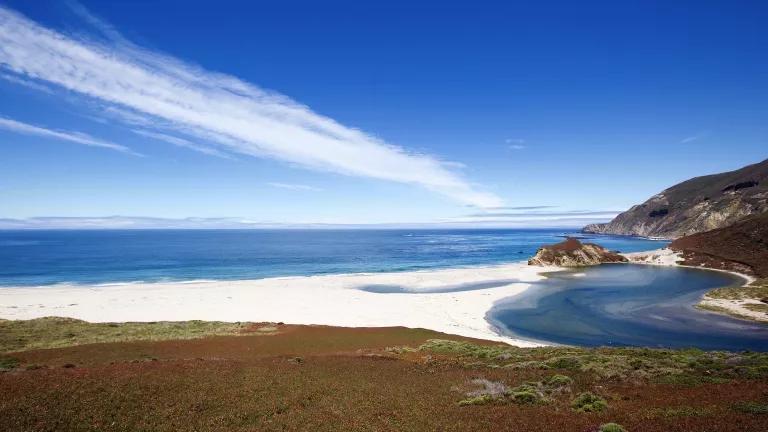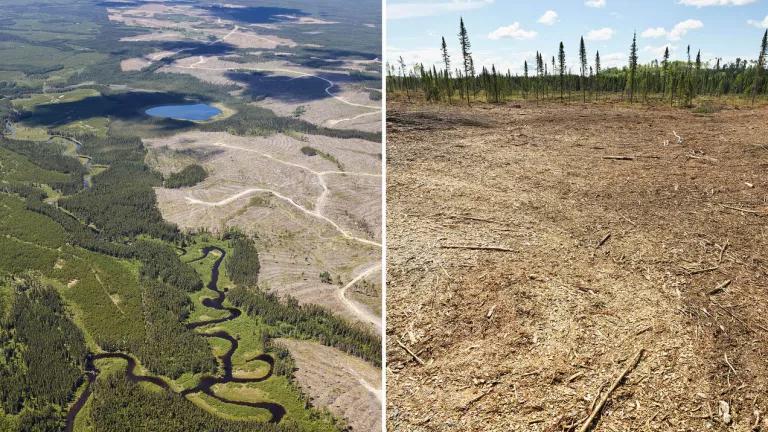
My friends and I were utterly captivated. The enormous grizzly bear we had been watching devour a dead bison was now settling delicately onto the cold, muddy, decaying carcass—exactly as if easing himself, facedown and full-bellied, onto a comfy couch after a big dinner. We stared and smiled as the grizzly warily eyed the vultures congregating nearby while absentmindedly scratching his chin on the dead bison’s head and horns. How many places in the world, I wondered, can people still see such wildness—so close, so easily, so often?
I knew the answer: not many.
And once you start to list those places—Yellowstone, Glacier, Denali—it quickly becomes clear what many of them have in common: They’re our country’s national parks.
Last year, U.S. national parks posted a new attendance record—305 million visitors. That beat the previous record by fully 12 million people. And it reinforced what has long been obvious: Park visitors cherish the soul-stirring experiences to be had in these natural treasures and are willing to spend time, energy, and dollars to enjoy them—often again and again.
Within the national parks system, two of the best-known parks, Yellowstone and Denali, also broke their own individual attendance records in 2015. And while there are plenty of reasons why these two, in particular, continue to appeal to so many people year after year, one reason stands out. As one retired ranger with the National Park Service recently told a newspaper reporter: “Both parks are wildlife shows.”
Indeed they are. Wolves, grizzlies, black bears, and moose abound at both Denali and Yellowstone; at the latter, visitors also have ample opportunity to see elk, antelope, bison, and all of their young up close. And as the recent attendance figures illustrate, people are taking full advantage of this opportunity. In the communities around Yellowstone, inns and motels that used to close during October and November, typically the slowest months of the year, now find themselves with more than enough bookings to justify staying open year-round. The owners of these establishments credit wildlife lovers, especially wolf-watchers, with this remarkable change of fortune.
The fact that we’re being drawn like never before to our wildest places is significant. The technology-driven revolution that we’re currently undergoing has made it incredibly easy for us to connect with one another — but harder, it seems, for us to connect with nature. For many people, a trip to Yellowstone or Denali is more than just a vacation; it might represent a powerful, even spiritual, form of communion with the idea of unspoiled, unmediated wilderness. And it’s safe to say that certain animals, namely the wolves and grizzly bears that inhabit both Denali and Yellowstone, embody this idea of wilderness more potently than any others. To see one of these animals in its natural environment is an experience as memorably poignant as it is viscerally thrilling.
In the course of my work as a wildlife advocate, I’ve been fortunate to see some of these animals up close. But I’ve also watched something else: other people seeing these animals up close. When people are allowing themselves to be captivated by the sight of wolves and bears—not distractedly gazing into their smartphones, or thinking about work, or worrying about the exigencies of their day-to-day lives—they’re being fully present. They’re grinning and sometimes even gasping with excitement. They’re laughing at the animals’ antics or marveling at their beauty. They’re offering to keep an eye on strangers’ jackets and purses so that others can take a turn looking through their scopes.
And back in the car or over dinner that evening, they’re not talking about the presidential election or the latest TV shows they’ve been binge-watching. They’re still talking about that huge grizzly they saw taking a postprandial nap on a bison carcass, or the unexpected glimpse they caught of those wolf pups nursing near their den.
Which makes it all the more confounding and saddening that when these animals—the very same creatures that elicit so much joy and wonder in us — choose the wrong time to stretch a paw across the invisible, arbitrary lines that are our park’s administrative borders, the law often allows them to be hunted, trapped, and killed. Taken away from millions, all for the sport of a few.
It’s paradoxical that we would be flocking to national parks in hopes of spotting a bear or a wolf, yet trapping or shooting these animals should they venture just outside their protected parkland homes at the wrong time of year.
Paradoxical, and also profoundly selfish. One of the most important reasons we have and maintain our national parks in the first place is to give wild animals a safe (at least from humans) place to live, hunt, and breed, and to give visitors a chance to see them roaming free in their natural habitats. When someone takes it upon him or herself to shoot and kill a bear or wolf that lives primarily within a park, they not only take a life but deprive countless park visitors of a powerful, transcendent experience. Indeed, a recent study determined that the hunting and trapping of wolves along the boundaries of Denali and Yellowstone National Parks cut the chances of seeing a wolf within those parks by half.
Whenever a wolf (like the one known as 06 Female) or a bear (like the one called Scarface) is killed right outside a national park, the event reignites the complex debate over whether we should institute so-called “buffer” or “transition” zones around these protected places. This debate, which has been going on for decades, needs to continue. Frustratingly, a few years ago, the state of Montana actually prohibited the closing of areas adjacent to national parks to wolf hunting or trapping (unless quotas have been met). Given the economic value that wildlife viewing brings to the state and the negative effect that hunting just outside parks can have on viewing opportunities, the state legislature should reconsider that law.
In the meantime, Montana’s Fish and Wildlife Commission has at least instated relatively low wolf hunting and trapping quotas adjacent to the parks. These actions should be recognized and appreciated as steps in the right direction. But we must push our political and wildlife officials to do more, to continue the conversation, and to adopt reasonable restrictions around our most protected places.
For example, in connection with the U.S. Fish and Wildlife Service’s recent proposal to remove Endangered Species Act protections from Greater Yellowstone Ecosystem grizzly bears, the states of Idaho, Montana, and Wyoming have proposed to allow grizzly bears in this area (including just outside Yellowstone Park) to be hunted. But these states should prohibit, or at the very least limit, grizzly hunting near the park’s borders—as Yellowstone’s superintendent Dan Wenk has also urged.
I grew up a hunter. I believe there are species and situations for which hunting makes sense. Killing wolves and bears along the undetectable edges of our national parks is simply not one of them. The opportunity to witness wolves and bears in our national parks provides an economic boon to local economies and profound personal experiences to people from all over the world. Killing these animals along our parks’ borders risks taking those opportunities away, and cuts at the core of a crucial reason we have parks at all.
Let’s not exploit and punish our wolves and bears for crossing invisible lines that they cannot see or know exist. Instead, when we happen to encounter these magnificent creatures just outside of their protected homes, let’s continue to act as the visitors we are and just simply, silently, and gratefully marvel—for their sake and for our own.



